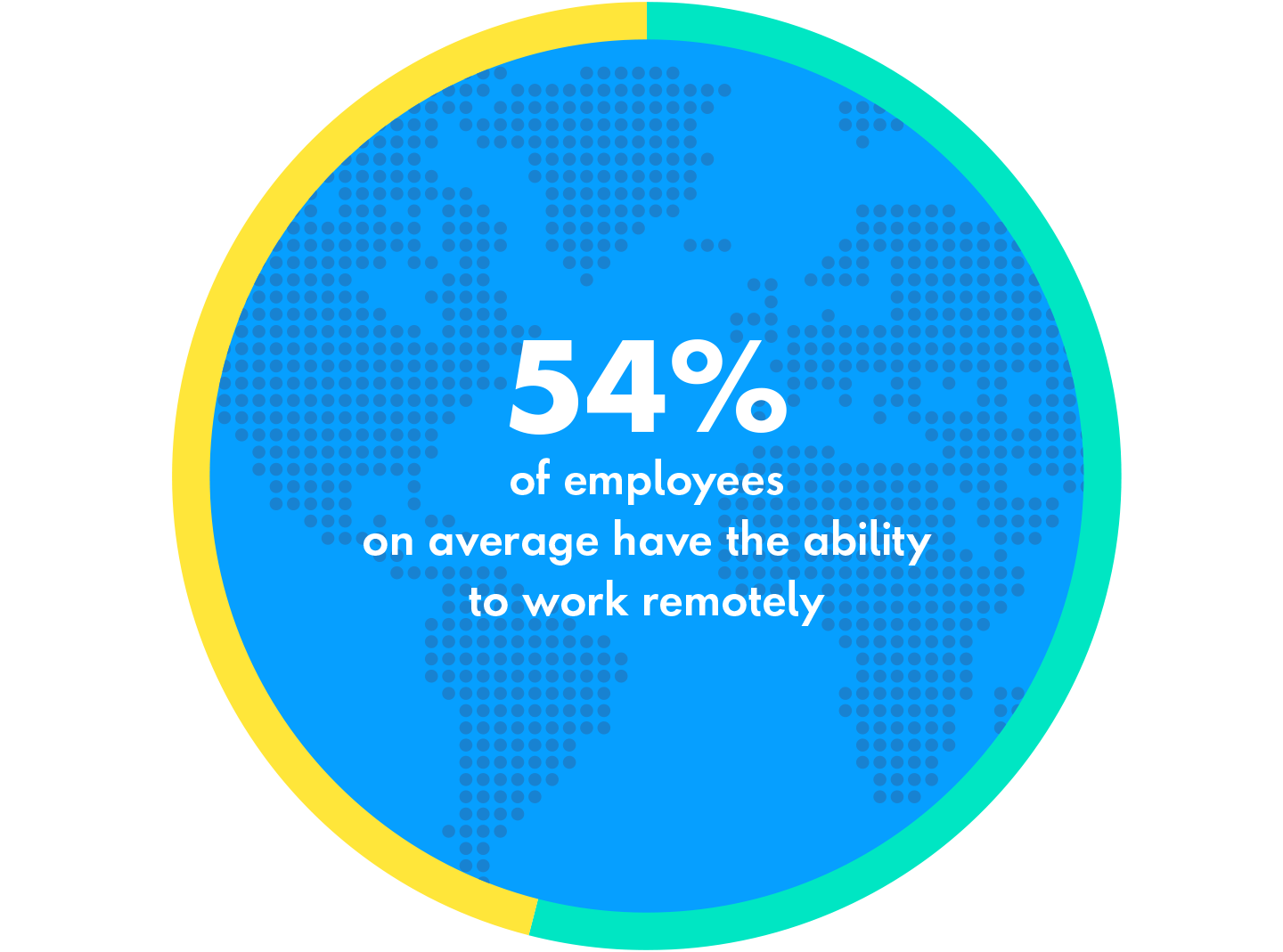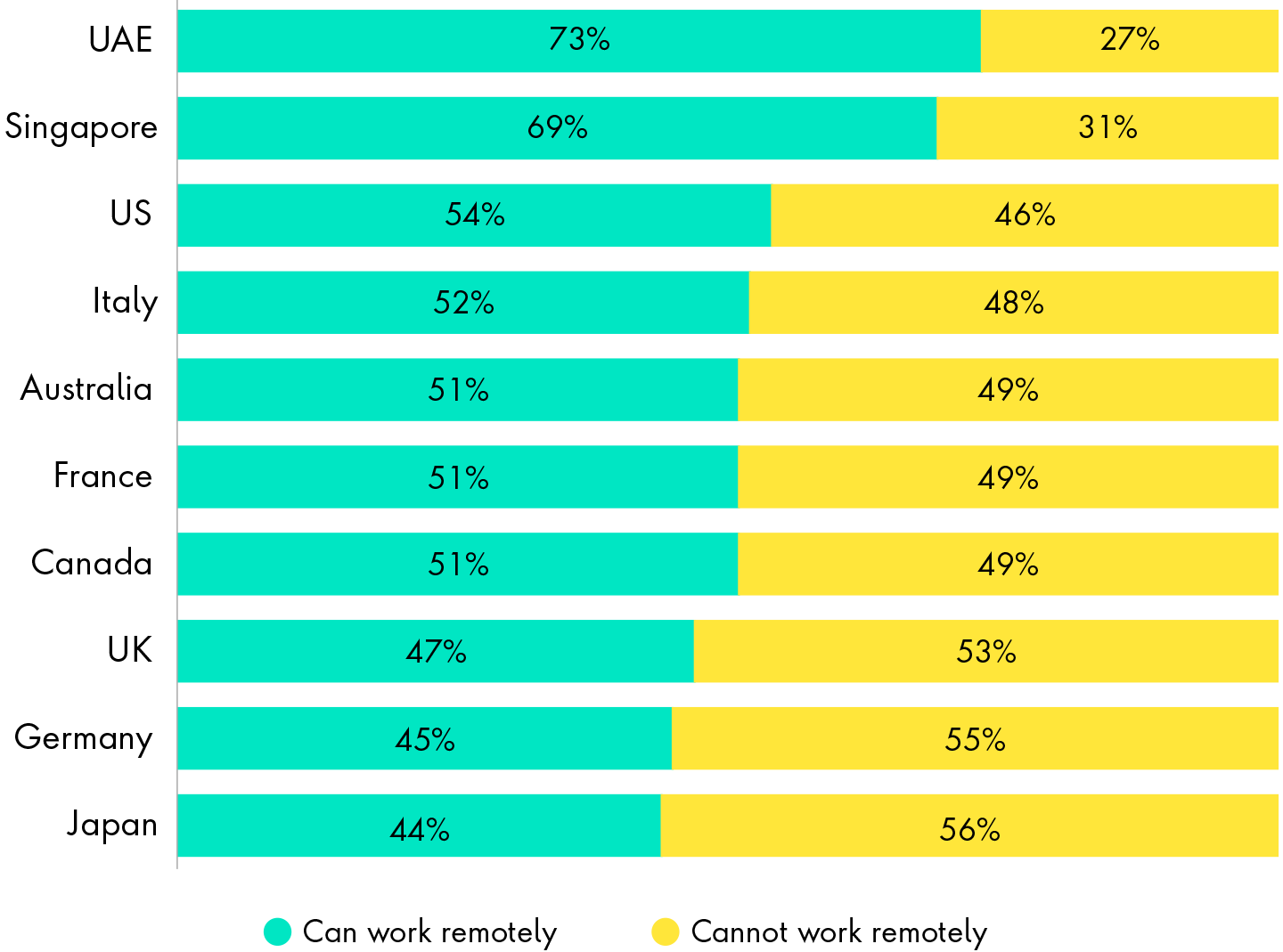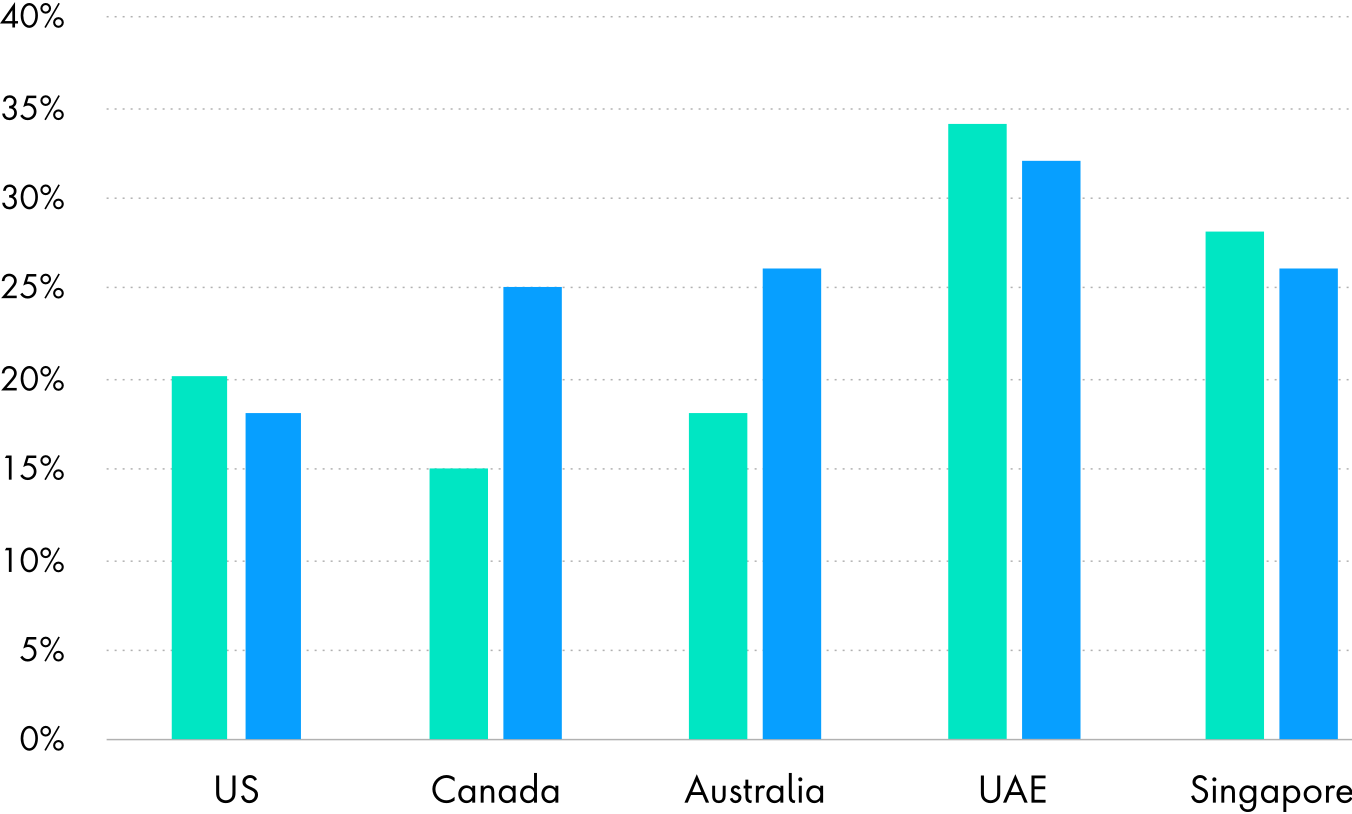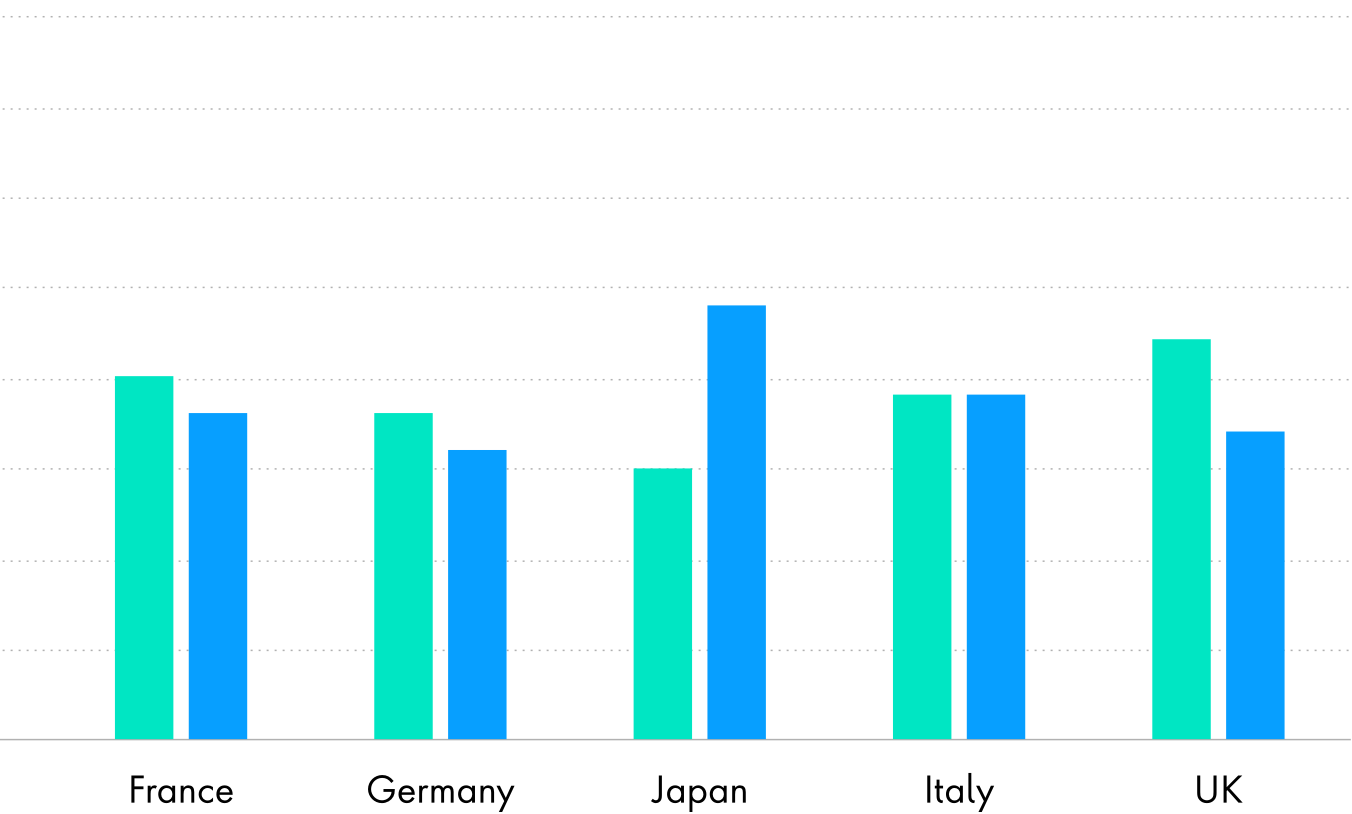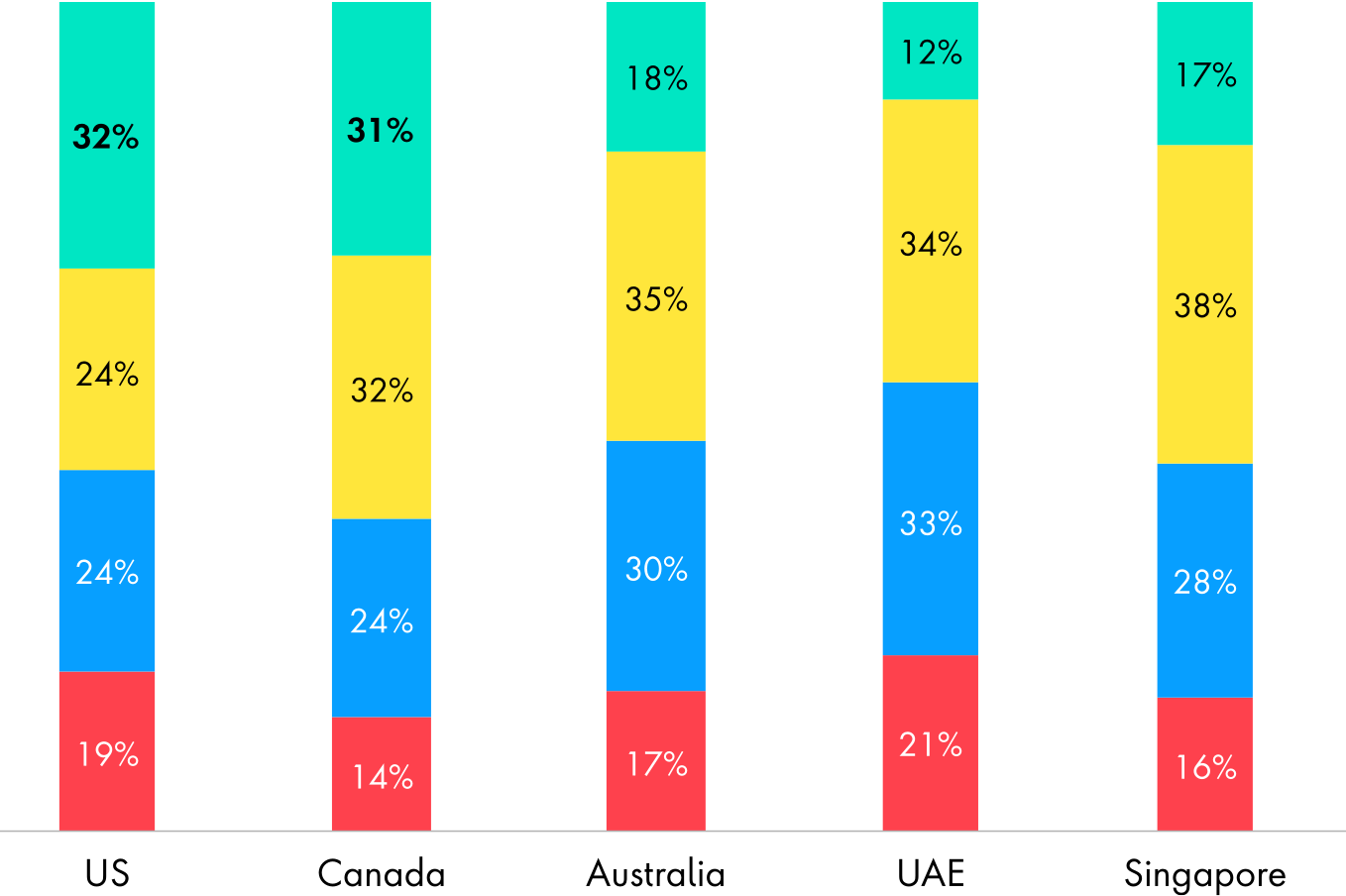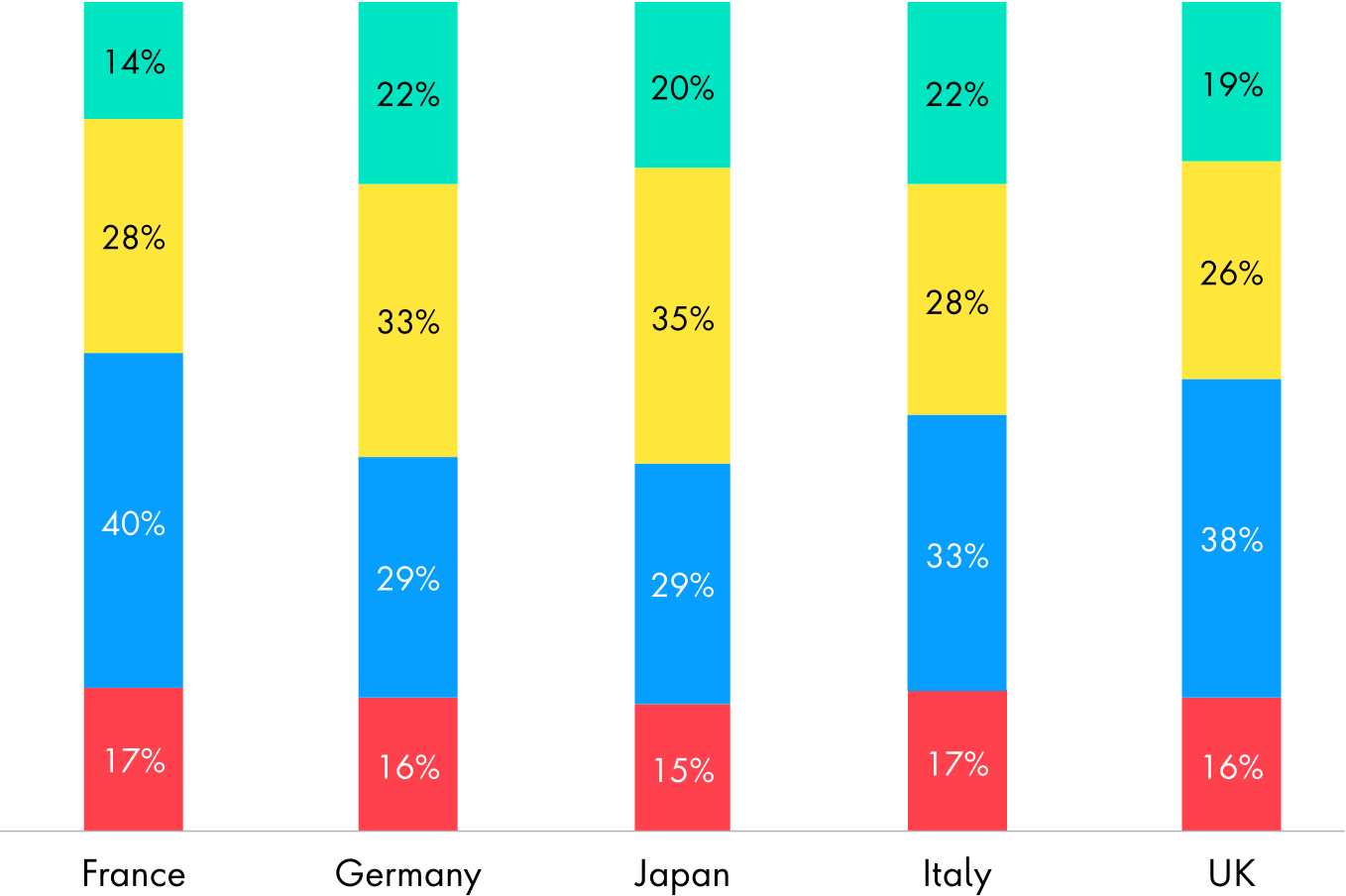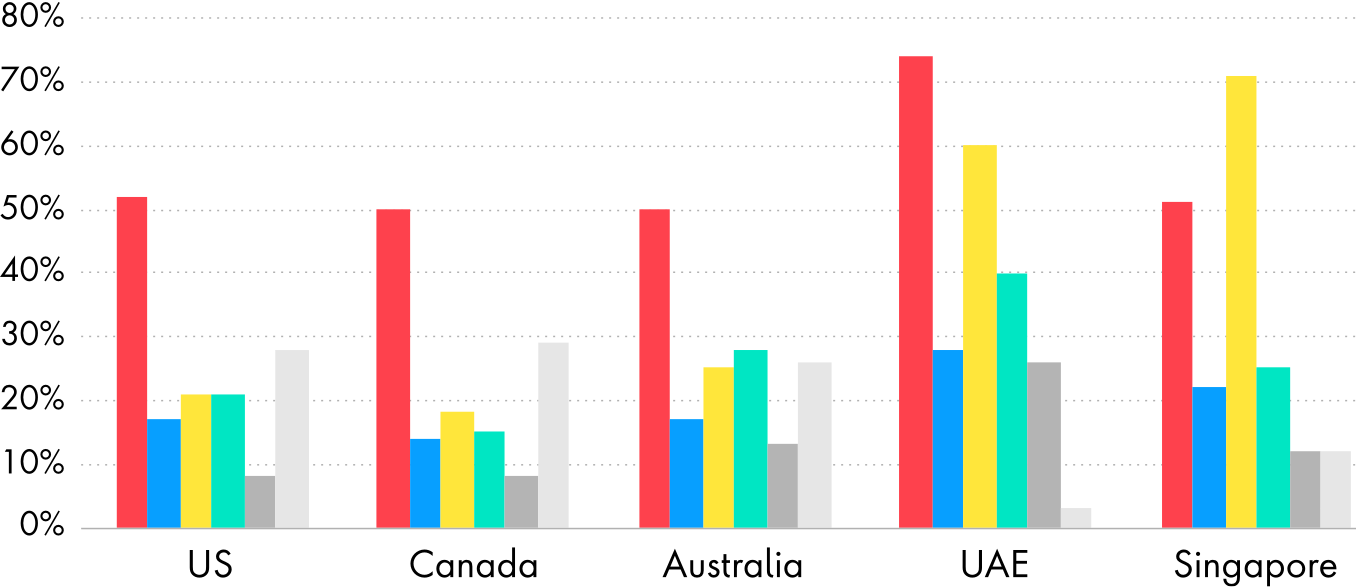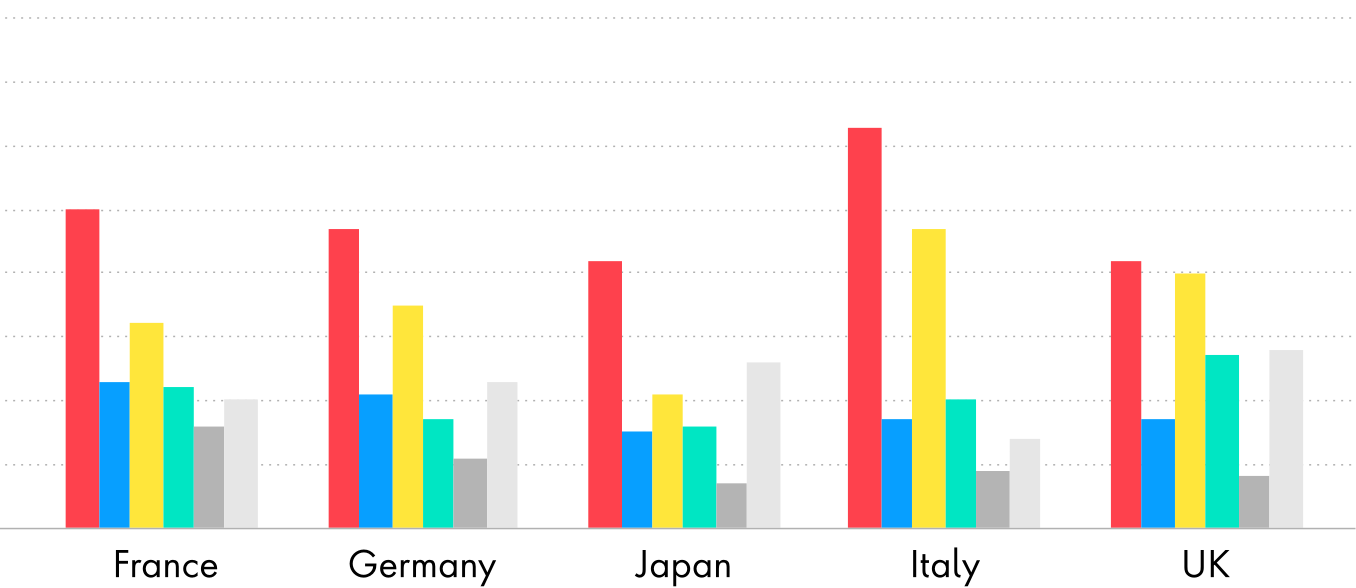What issue can we solve for you?
Type in your prompt above or try one of these suggestions
Suggested Prompt



Insight
The Future of Work: Enabling Employees Through Digital Technology
The Future of Work: Enabling Employees Through Digital Technology
In Publicis Sapient’s November 2020 edition of The Digital Life Index, we explored the shifting dynamic of the remote workforce. Our research reveals growing interest in hybrid work environments, greater opportunity for digital upskilling and a growing need for technologies to keep employees connected.
For this wave, data was collected through an online survey sent to 7,000 people in 10 countries, including the United States, Australia, Canada, France, Germany, Italy, Japan, Singapore, the United Arab Emirates and the United Kingdom.

The state of the workforce
According to our research, 54 percent of employees on average have the ability to work remotely.
Germany, the United Kingdom and Japan report the lowest number of people who can do some or all of their work outside the office.

Embracing digital tools to get work done
A transition to remote work requires employees to embrace digital tools that enable them to collaborate and communicate effectively outside of the office.
On average, most respondents reported some familiarity with the digital tools they use to work remotely. However, nearly one-fifth of respondents also want more training and support when mastering these digital tools.
More than half of respondents in the U.S. (55%) and the UAE (51%) say they had a great deal of experience with digital tools that enable remote work before the pandemic.
Around one-fourth (23%) of respondents in Japan say they had little to no experience with the tools they adopted for remote work, higher than any other country reported.
Before the coronavirus outbreak, how much experience did you have with the digital tools you are using now?
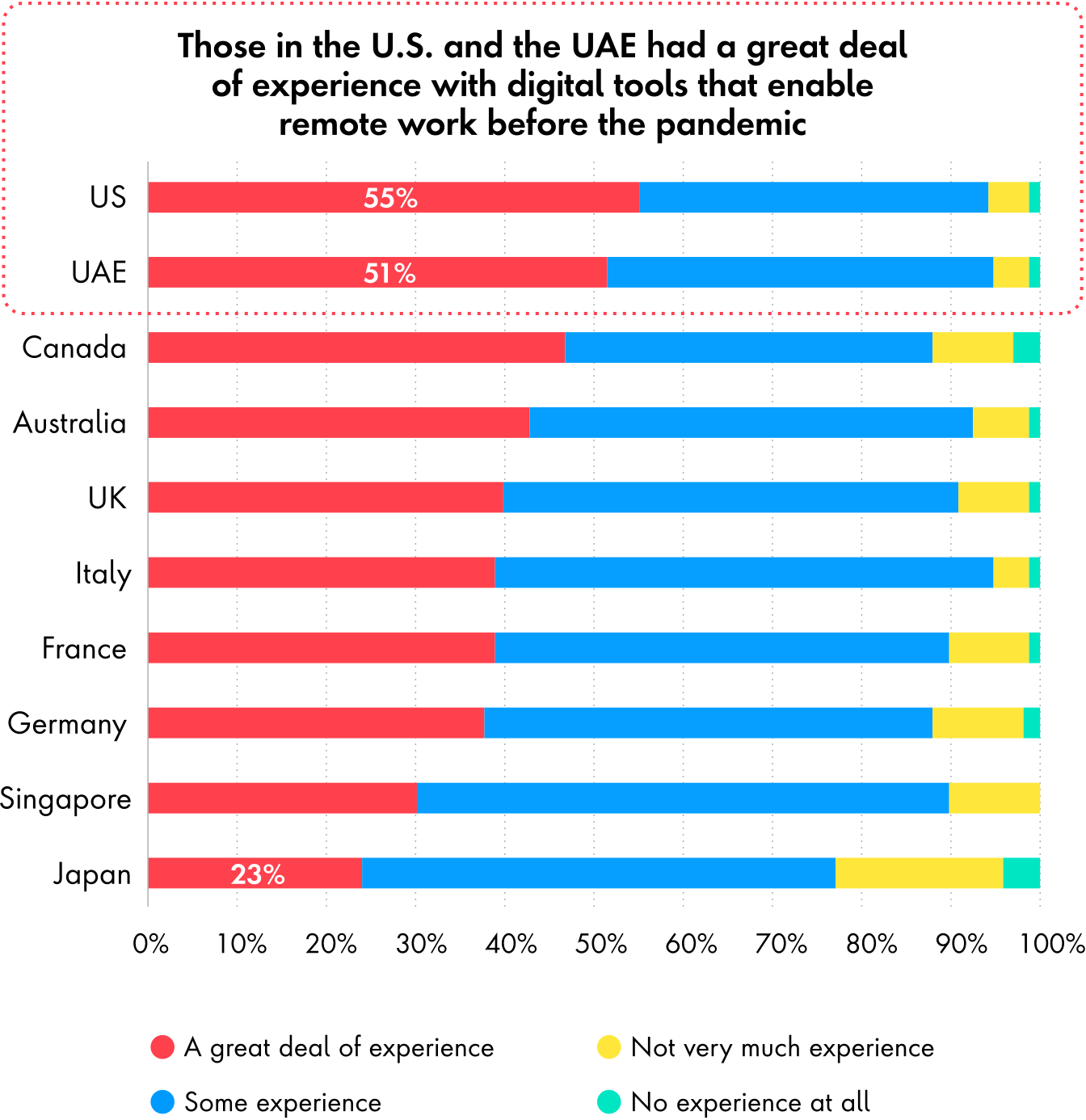
What would you like your company to do to make remote working a better experience?

Remote workers seek flexibility when they do return to the office
As offices begin to reopen, remote workers are reconsidering what it means to go to work. On average, global respondents say they would prefer some type of hybrid environment, with some days spent in-office, and others at home.
Respondents in the United States (40%) and Canada (38%) were more likely to say they would prefer to work from home every day. Comparatively, respondents in these countries were also more likely to have rooms dedicated to office space when compared to other regions (32% and 31%, respectively).
If it were possible to go into an office or work from home going forward, which would you prefer?

Current at-home workspace

Despite having the largest populations of people who say they can work remotely, respondents in the UAE (45%), Italy (39%), Singapore (39%) and Japan (37%) were more likely to prefer to spend most days in the office, with 1-2 days spent at home.
Respondents in France (29%) and the UAE (23%) were more likely to say they wanted to head into the office every day.

Non-remote workers require connected solutions
Currently, personal cell phones remain the most common way for non-remote employees to manage their day-to-day relationships with employers and colleagues (51% global average)
Which of the following tools do you use to manage your workday or communicate with your colleagues?

However, our research found that group messaging services are more popular among non-remote workers in Singapore (71%) and the UAE (60%). Group messaging services are also more popular among respondents in European nations (France, Italy, Germany and the United Kingdom) when compared to those in North America and Australia.
Globally, less than 20 percent of non-remote employees use company-owned mobile apps or intranet to manage their work. The only exception reported were respondents in the UAE, which reported slightly over 25 percent in both categories (26% and 28%, respectively).
Interested in learning how employee preferences by country affect your strategy? Simply contact us for country-level insights and more.
Want access to the full report? Dive back into the full report here.




